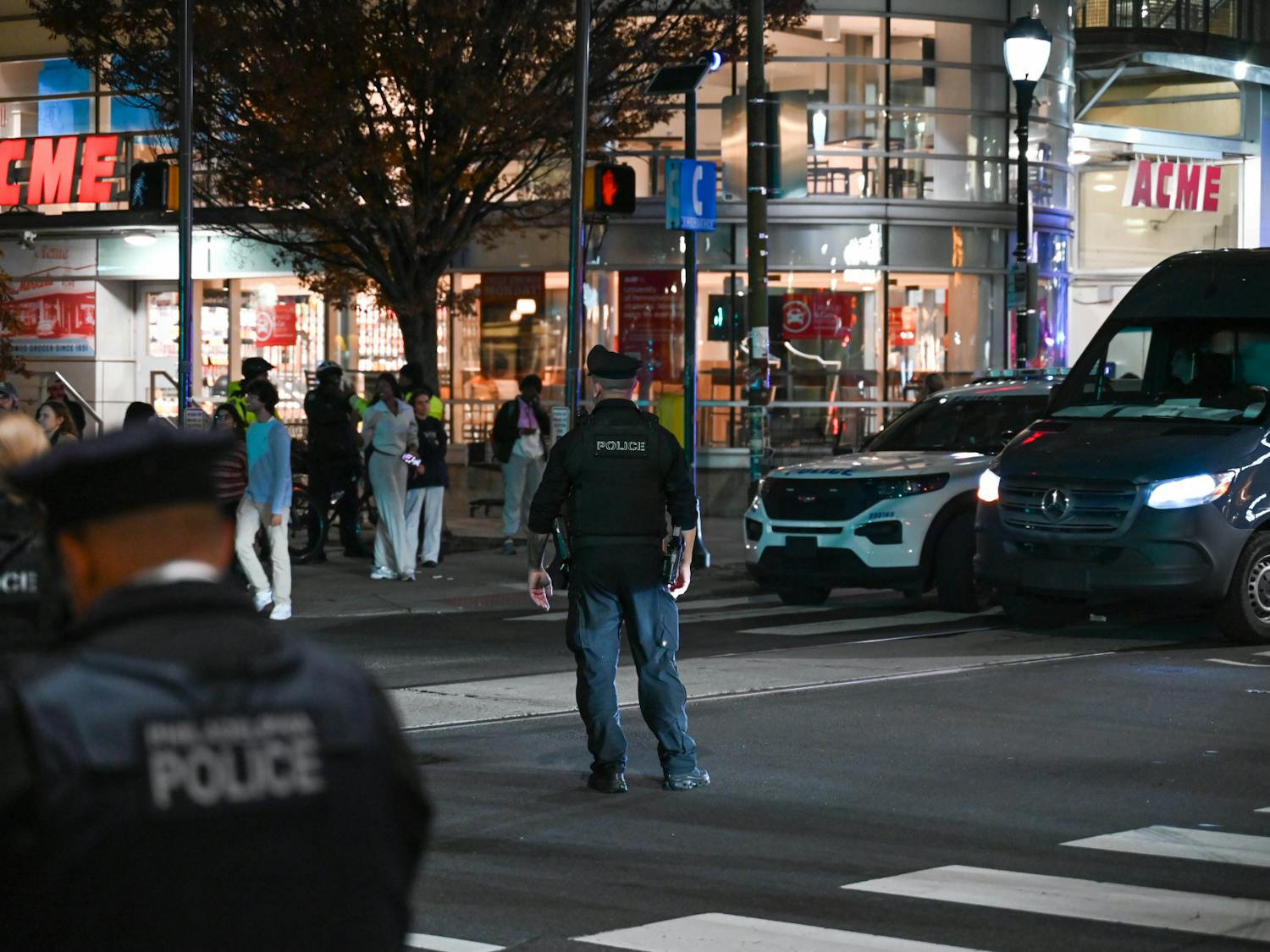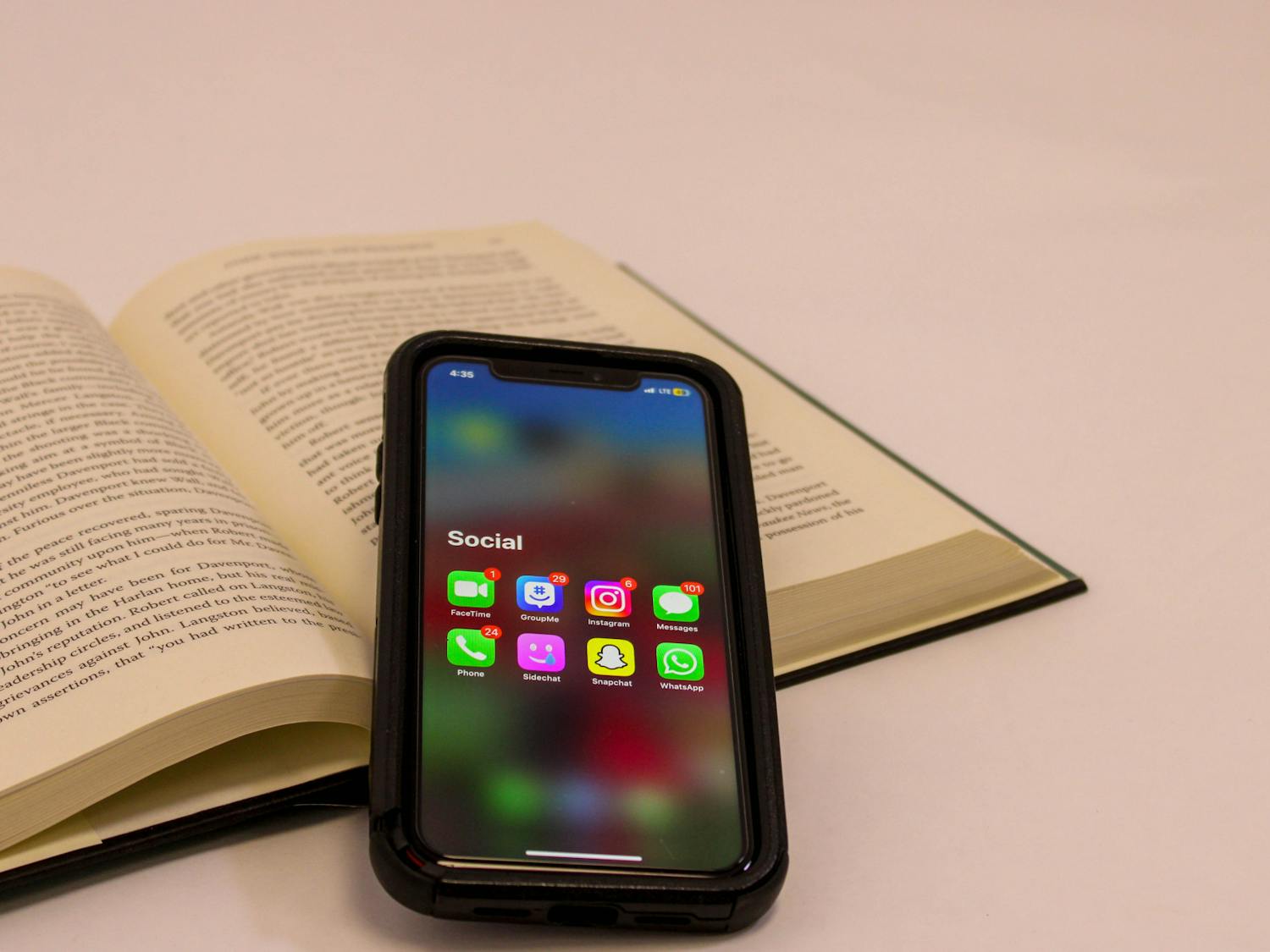There are three groups of people on the road. When an ambulance approaches, some drivers quickly pull aside to let it pass. Others -- either because they blatantly disregard the emergency siren or because their reaction time is slow -- don't change speed or direction.
But the third and largest group actually speeds up when there's an emergency vehicle on their tail. Not only is this dangerous, it also slows down the ambulance.
While this driver courtesy deficiency can be curbed with traffic violations, additional measures to reduce ambulance response times must be pursued simultaneously. Installing a priority traffic control system that permits ambulances to trigger an early green light as they approach an intersection would be a good start.
The other day, as I reached 34th Street while heading east on Locust Walk, I saw an ambulance approaching on my left. Emergency vehicle sirens trump pedestrian yield signs, and so I stepped back onto the curb. The traffic light at 34th and Spruce was red. A long line of cars was blocking the ambulance's pathway. The ambulance could not get past the cars and the cars could not move out of the way. The vehicles with the right-of-way, traveling perpendicularly along Spruce, did not consider stopping as they did not see the ambulance and heard only a faded siren, compliments of the Doppler effect.
Eventually, the light turned green and the cars on 34th pulled into the sides of the intersection, making room for the emergency vehicle behind them to pass. But a couple of minutes can make a significant difference for the patient in the back of the ambulance.
American Medical Association studies show that 60 percent of sudden deaths caused by cardiac arrest occur before hospitalization. Every single ambulance arriving at the Hospital of the University of Pennsylvania crosses the Spruce/34th intersection.
To help combat this problem, the Philadelphia City Streets Department should install a traffic light sensor at the intersection. In practice, the ambulance driver presses an emitter button which broadcasts an infrared communication toward the upcoming traffic light. At the intersection, a detector receives the transmission and sends an electronic signal to the traffic light phrase selector. If the light is already green, the phase selector directs the controller to stay on green until the ambulance passes. If the light is red, the phase selector requests an early green signal (to avoid confusion, yellow is not bypassed). The emergency vehicle is given the right-of-way and proceeds through the intersection. The traffic light then reverts to its normal pattern.
This technology is not reserved strictly for ambulances -- it can be used by fire trucks and police cars as well. Priority control systems have been implemented with much success in over 50,000 intersections across the United States, Canada and Europe. The system allows emergency vehicles to respond to an incident more quickly and safely. A Denver Fire Department study found that traffic light sensors reduce response times for emergency vehicles by as much as 23 percent.
Philadelphia's problem is not limited to one intersection. Ambulance drivers on break at HUP expressed frustration not only with 34th and Spruce, but with congestion points around the city. The priority traffic light system should be catered to optimize all types of intersections.
Because 34th Street is one-way, it makes sense to trigger a green light so that cars can get out of the way. But on larger arteries with two-way streets, an interrupter should be installed so that all directions see a red light. In this scenario, the left side of the street clears and is free for ambulance use.
Robert Wright, engineer manager with the Transportation Engineering and Planning Unit at the Philadelphia City Streets Department, told me that this kind of technology has been tested in some parts of Center City, but that he experienced several technical problems with it. "We haven't 'closed the door' on the technology," he explained, "but we aren't looking to expand it just yet either."
Not quite what I was hoping to hear. Traffic light sensors have yielded positive results in other cities, and there's no fundamental reason why they can't work for Philadelphia, too. If the city government were half as opportunistic as the drivers who tailgate ambulances, this system would have been in place a long time ago.
Sarah Eskreis-Winkler is a sophomore Diplomatic History major from Wynnewood, Pa.








